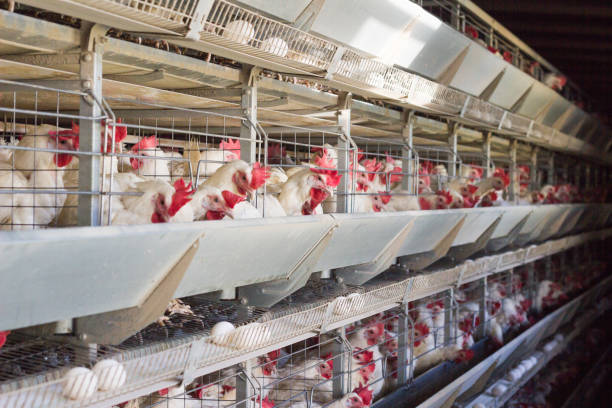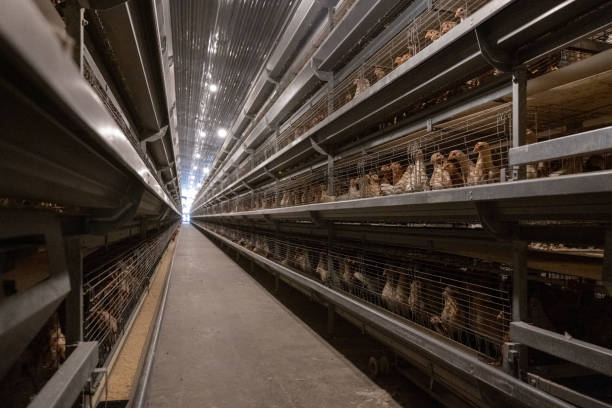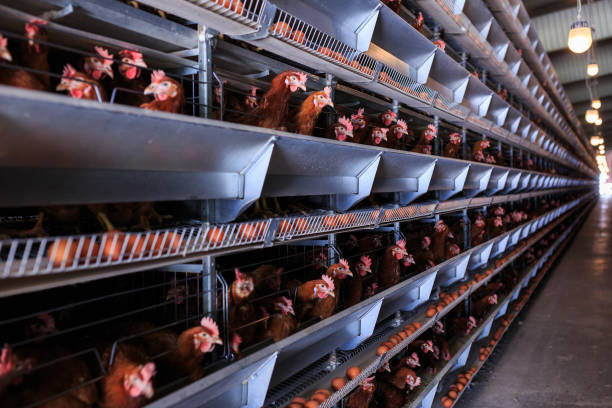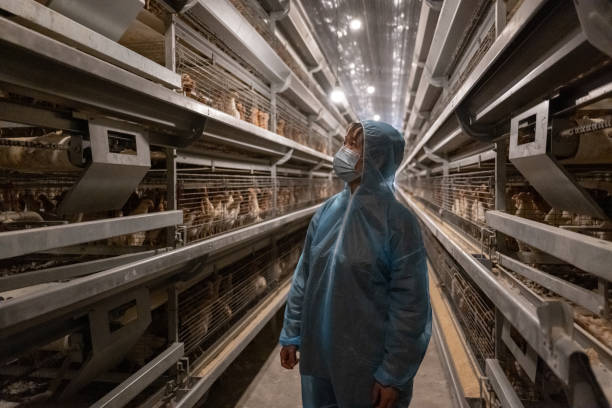
Boost Your Poultry Farm: Quality 20,000 Layer Chicken Cages Available Now
Boost Your Poultry Farm: Quality 20,000 Layer Chicken Cages Available Now
Are you ready to take your poultry farming business to the next level? Do you dream of maximizing egg production while ensuring the well-being of your feathered friends? The answer might just be staring you in the face: high-quality layer chicken cages. And we’re not talking about just any cages; we’re talking about systems designed to house a substantial flock of 20,000 laying hens efficiently and humanely.
Investing in a robust and well-designed layer cage system is more than just buying equipment; it’s a strategic move that can significantly impact your farm’s profitability, operational efficiency, and the overall health of your chickens. This article delves deep into why you should consider investing in quality layer chicken cages for your poultry farm, particularly if you’re aiming for a sizeable operation of around 20,000 birds. We’ll explore the benefits, features to look for, and how selecting the right supplier can set you up for long-term success.
**The Advantages of Layer Chicken Cages for Large-Scale Operations**
Let’s face it: managing a large flock of laying hens can be a daunting task. Traditional free-range or deep litter systems, while having their advocates, often come with challenges like higher labor requirements, increased risk of disease spread, and difficulties in accurately monitoring egg production. Layer chicken cages, especially modern, well-designed ones, address these issues head-on. Here’s a breakdown of the key advantages:
*Enhanced Egg Production Efficiency:* Layer cages are designed to provide each hen with the optimal space and resources for consistent egg laying. Features like readily accessible feed and water, along with a comfortable environment, can significantly increase egg production rates. Moreover, the design of the cages facilitates easy egg collection, reducing breakage and ensuring a higher percentage of marketable eggs.
*Improved Hygiene and Disease Control:* Caged systems inherently offer better control over the environment. Manure is typically collected below the cages, minimizing contact with the birds and reducing the risk of disease transmission. This leads to a healthier flock, lower mortality rates, and reduced reliance on antibiotics. Easy cleaning and disinfection protocols further contribute to a hygienic environment.

*Optimized Space Utilization:* In poultry farming, space is money. Layer cages allow you to house a significantly larger number of chickens in the same area compared to alternative systems. This is particularly crucial for farms with limited land availability, maximizing the return on investment from your property. By stacking cages vertically, you can effectively utilize space that would otherwise be wasted.
*Reduced Labor Costs:* Automation is a key advantage of modern cage systems. Automatic feeding, watering, and egg collection systems significantly reduce the labor needed for daily tasks. This not only saves you money on wages but also frees up your workforce to focus on other critical aspects of farm management, such as flock health monitoring and market analysis.
*Better Monitoring and Management:* Layer cages make it easier to monitor the health and performance of individual birds. You can quickly isolate sick or unproductive hens, preventing the spread of disease and optimizing the overall efficiency of your flock. Detailed records of egg production can be easily maintained, providing valuable insights into the performance of your operation.
**Key Features to Look for in Quality Layer Chicken Cages**
Not all layer chicken cages are created equal. To ensure you’re investing in a system that will deliver long-term value, it’s crucial to consider the following features:

*Durable Construction and Materials:* The cages should be constructed from high-quality, corrosion-resistant materials such as galvanized steel. This ensures longevity and minimizes maintenance costs, even in harsh environmental conditions. Look for cages with robust welding and sturdy construction to withstand the daily wear and tear of a large-scale operation.

*Optimized Cage Size and Layout:* The dimensions of the cages should be carefully considered to provide adequate space for each hen to move comfortably, access feed and water, and lay eggs without stress. The layout should promote natural behaviors such as perching and dust bathing, contributing to the overall well-being of the birds. Inquire about cage configurations tailored to specific breeds or production goals.
*Efficient Feeding and Watering Systems:* Automatic feeding systems should deliver a consistent and accurate amount of feed to each cage, minimizing waste and ensuring that all birds receive adequate nutrition. Similarly, the watering system should provide a continuous supply of fresh, clean water, preventing dehydration and promoting optimal health. Nipple drinkers are a common and effective choice.
*Effective Manure Removal System:* An efficient manure removal system is crucial for maintaining hygiene and controlling ammonia levels in the poultry house. Options include belt cleaning systems, scraper systems, or deep pit systems. The choice will depend on your specific needs and the overall design of your facility.
*Automated Egg Collection System:* An automated egg collection system will significantly reduce labor costs and minimize egg breakage. Look for systems that gently transport eggs from the cages to a central collection point, where they can be graded and packaged for market. Consider the capacity and reliability of the system.
*Ventilation and Climate Control:* Proper ventilation is essential for maintaining a comfortable and healthy environment for your laying hens. The cage system should be designed to promote airflow and prevent the buildup of excess heat, humidity, or ammonia. Integration with automated climate control systems can further optimize the environment.
*Easy Assembly and Maintenance:* Choose a cage system that is relatively easy to assemble and maintain. Clear instructions and readily available spare parts will minimize downtime and ensure the long-term reliability of your investment. Inquire about after-sales support and technical assistance from the supplier.
**Selecting the Right Supplier: A Partnership for Success**
Choosing the right supplier is just as important as selecting the right cage system. A reputable supplier will not only provide high-quality equipment but also offer valuable expertise and support to help you maximize your farm’s potential. Here are some factors to consider when evaluating potential suppliers:
*Experience and Reputation:* Look for a supplier with a proven track record in the poultry industry. A company with years of experience and a strong reputation for quality and reliability is more likely to deliver a system that meets your needs and exceeds your expectations. Ask for customer testimonials and case studies.
*Customization Options:* Every poultry farm is unique, and a good supplier will be able to tailor the cage system to your specific requirements. Whether you need to accommodate a specific breed of chicken or adapt to the layout of your existing building, the supplier should be flexible and willing to work with you.
*Technical Support and After-Sales Service:* Equipment breakdowns are inevitable, and a reliable supplier will provide prompt and efficient technical support to minimize downtime. Inquire about warranty coverage, spare parts availability, and the supplier’s response time to service requests.
*Commitment to Animal Welfare:* Choose a supplier who prioritizes the well-being of the chickens housed in their cages. Look for systems that are designed to promote natural behaviors, reduce stress, and ensure a comfortable and healthy environment for the birds. This is not only ethically responsible but also contributes to improved egg production and overall farm profitability.
*Competitive Pricing and Financing Options:* While price shouldn’t be the only factor, it’s certainly an important consideration. Compare quotes from multiple suppliers and look for a system that offers the best value for your money. Inquire about financing options or leasing programs that can help you manage the upfront investment.
*Compliance with Regulations:* Ensure that the cage system complies with all relevant local and national regulations regarding animal welfare and environmental protection. A reputable supplier will be familiar with these regulations and can help you navigate the permitting process.
**Investing in Your Future: Making the Right Choice**
Investing in quality layer chicken cages for a 20,000-bird operation is a significant decision, but it’s one that can yield substantial returns in terms of increased egg production, reduced labor costs, improved hygiene, and enhanced overall profitability. By carefully considering the features of the cage system and selecting a reputable supplier, you can set your poultry farm up for long-term success. Remember, this isn’t just about buying equipment; it’s about building a sustainable and thriving business that benefits both your bottom line and the well-being of your chickens. So, do your research, ask the right questions, and choose a system that will help you boost your poultry farm to new heights. The future of your egg production depends on it.
